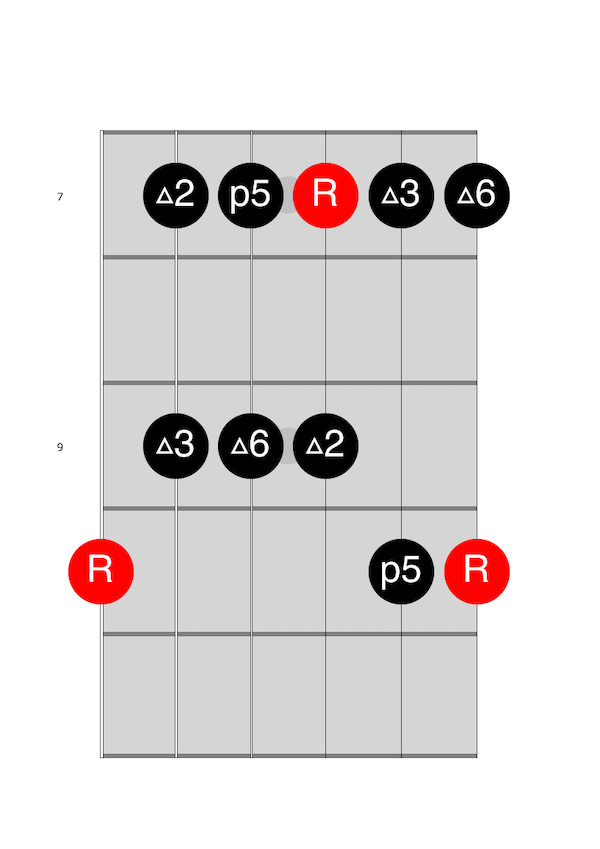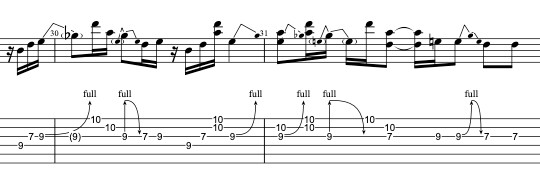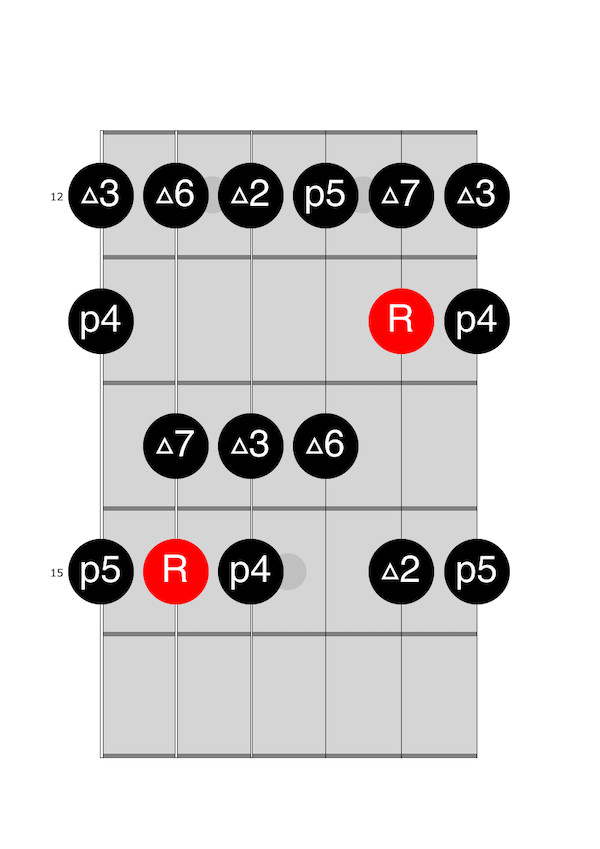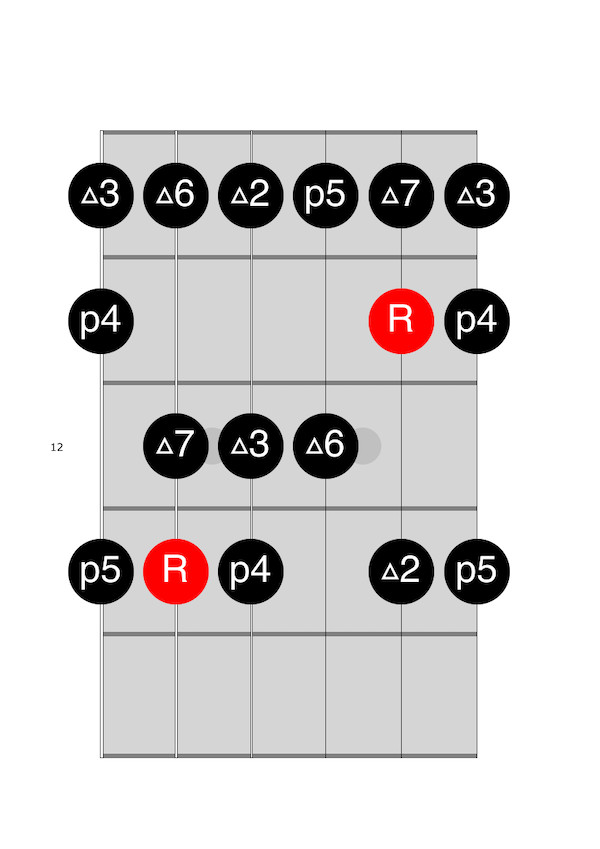Are you eager to master the iconic guitar solo from “Midnight Rider”? At guitarplayers.net, we’re dedicated to helping guitar players like you unlock the secrets of classic rock anthems. This guide provides a step-by-step breakdown, covering chords, riffs, and scales for an authentic performance, even teaching some awesome guitar lessons for you to pick up on.
1. What Makes the “Midnight Rider” Guitar Solo So Special?
The “Midnight Rider” guitar solo stands out due to its bluesy feel, melodic phrasing, and emotional depth, all hallmarks of the Allman Brothers Band’s signature sound. It’s a masterclass in tasteful soloing, blending pentatonic scales with major scales to create a unique and captivating musical experience.
2. Who Composed “Midnight Rider” and What’s Its History?
“Midnight Rider” was co-written by Gregg Allman and Robert Payne, gracing The Allman Brothers Band’s 1970 album, Idlewild South. This song, recorded at Miami’s Criteria Studios with Tom Dowd at the helm, embodies themes of freedom and restlessness, resonating deeply with listeners and securing its place in the Grammy Hall of Fame in 1998. It continues to be celebrated as one of rock’s greatest songs.
3. What Chords Do I Need to Know for “Midnight Rider”?
To play “Midnight Rider”, you’ll need four essential chords: D5, Gm, C, and Bb. Here’s a breakdown of how to play each one:
3.1. D5 Chord
D5 is played in open position using only three strings. It resembles a typical D chord, but you’ll remove the 2nd fret on the 1st string. This allows for a bluesy embellishment, as you’ll use that finger to play a bluesy lick on the chord, muting the 1st string to prevent it from ringing open.
3.2. Gm Chord
Gm is played as a standard minor bar chord with the root on the 6th string in the 3rd position.
3.3. C Chord
C is played in open position.
3.4. Bb Chord
Bb is another bar chord, but this time the root is on the 5th string.
4. In What Key Is “Midnight Rider” Played?
“Midnight Rider” is primarily in the key of D. However, a songwriter might use the key signature of G, as the melody strongly suggests a D Mixolydian scale, a common sound in classic rock. If leading a band, it’s best to refer to it as the key of D.
5. How Is the Song Structure Organized in “Midnight Rider”?
“Midnight Rider” is structured around two main sections: the “main progression” and the “bridge”.
5.1. Main Progression
The main progression is 12 bars long, starting with 6 bars of D5.
D5 (6 bars)
Then, it moves to Gm for 1 bar and C for 1 bar.
Gm (1 bar)
C (1 bar)
After this, it returns to D5 for 4 bars, and the whole section repeats.
D5 (4 bars)
Therefore, the main progression is:
D5 (6 bars)
Gm (1 bar)
C (1 bar)
D5 (4 bars)
When playing the D5 chord, incorporate a bluesy embellishment by playing the note C against the D chord. This is a prevalent sound in many classic tunes. That’s why we use a D5 chord instead of a full D major chord. Your middle finger will need to quickly access the note C on the 3rd fret of the 5th string for the bluesy lick.
5.2. Bridge Section
The “bridge” section, 16 bars long, serves as an instrumental section and introduces the Bb chord. It begins with 4 bars of D5. (Remember to use the riff for D5.)
D5 (4 bars)
Then, play 5 bars alternating between C and Bb, with one bar on each chord:
C (1 bar)
Bb (1 bar)
C (1 bar)
Bb (1 bar)
C (1 bar)
Follow this with a crescendo over 3 bars of a Bb chord.
Bb (3 bars) build in energy and crescendo
It concludes with 4 bars of D5 again.
D5 (4 bars)
So, the “bridge” section goes:
D5 (4 bars)
C (1 bar)
Bb (1 bar)
C (1 bar)
Bb (1 bar)
C (1 bar)
Bb (3 bars) build in energy and crescendo
D5 (4 bars)
6. What Scales Are Used in the “Midnight Rider” Solo?
The solo in “Midnight Rider,” which occurs over the “bridge” chord progression, transitions through 3 different keys and 3 different scales.
6.1. Scales Over Chords
Here are the scales used over each chord in the “bridge”:
D5 = D major pentatonic scale
C = C major scale
Bb = Bb major scale
6.2. D Major Pentatonic Scale
Over the signature riff, the guitar solo uses notes from the D major pentatonic scale.
This scale can be played in the 7th position.
 D Major Pentatonic Scale
D Major Pentatonic Scale
The D major pentatonic scale consists of five notes from the D major scale:
D (the root note)
E (the major 2nd)
F# (the major 3rd)
A (the perfect 5th)
B (the major 6th)
6.3. Pedal Steel Style Licks
These notes are used to play ‘pedal steel’ style guitar licks. Here’s an example:
 Pedal Steel Blues Lick
Pedal Steel Blues Lick
6.4. C Major Scale
The C major scale pattern used over the C chord:
 C Major Pentatonic Scale
C Major Pentatonic Scale
6.5. Bb Major Scale
The Bb major scale pattern is the same as the C major scale, just shifted down 2 frets:
 Bb Major Scale
Bb Major Scale
7. Can Beginners Learn to Play the “Midnight Rider” Guitar Solo?
Absolutely! While the full solo might take time to master, beginners can start with the main riff and chord progression. Focus on clean chord changes and the bluesy D5 embellishment. As your skills improve, gradually incorporate more complex licks and scales from the solo.
8. What Techniques Are Essential for Nailing the “Midnight Rider” Solo?
Several techniques are crucial for accurately playing the “Midnight Rider” solo:
-
String Bending: Essential for the bluesy feel. Practice bending strings accurately to the desired pitch.
-
Slide Guitar: The solo incorporates elements of slide guitar, so experimenting with a slide can add authenticity.
-
Vibrato: Use vibrato to add expression and sustain to your notes.
-
Alternate Picking: Develop a consistent alternate picking technique for speed and clarity.
-
Dynamics: Pay attention to dynamics, varying your picking strength to create a more expressive performance.
9. What Gear Do I Need to Recreate the “Midnight Rider” Sound?
To capture the authentic sound of “Midnight Rider,” consider the following gear:
- Guitar: A Gibson Les Paul or similar humbucker-equipped guitar can get you close to the original tone.
- Amplifier: A vintage-style tube amp, like a Fender Tweed or a Marshall Plexi, will provide the warm, overdriven sound.
- Overdrive Pedal: An overdrive pedal can help you achieve the desired level of saturation and sustain.
- Slide: A glass or metal slide can be used for slide guitar techniques.
- Strings: Use a medium gauge string set for a balance of tone and playability.
10. What Practice Tips Will Help Me Improve Faster?
To accelerate your progress in learning the “Midnight Rider” solo, try these practice tips:
- Start Slow: Begin practicing at a slow tempo to focus on accuracy and technique.
- Use a Metronome: Practice with a metronome to develop a solid sense of timing and rhythm.
- Break It Down: Divide the solo into smaller sections and master each one before combining them.
- Listen Actively: Listen to the original recording repeatedly, paying attention to the nuances of the solo.
- Record Yourself: Record yourself playing and listen back to identify areas for improvement.
- Practice Regularly: Set aside consistent practice time each day to reinforce your learning.
- Learn From Others: Watch videos of other guitarists playing the solo and learn from their approaches.
- Be Patient: Learning a solo takes time and effort, so be patient with yourself and celebrate your progress.
11. What Are Some Common Mistakes to Avoid When Learning This Solo?
Avoid these common mistakes when learning the “Midnight Rider” solo:
- Rushing: Playing too fast before mastering the notes and rhythms.
- Inaccurate Bends: Bending strings out of tune.
- Poor Timing: Not playing in time with the music.
- Neglecting Dynamics: Playing everything at the same volume.
- Ignoring Tone: Not paying attention to your guitar tone and amp settings.
12. Are There Any Simplified Versions of the “Midnight Rider” Solo for Beginners?
Yes, many simplified versions of the “Midnight Rider” solo cater to beginners. These versions typically focus on the main melodic themes and use easier fingerings and fewer complex techniques. You can find these simplified versions on guitar tabs websites or in instructional books.
13. How Can I Improvise in the Style of the “Midnight Rider” Solo?
To improvise in the style of the “Midnight Rider” solo, focus on the following:
- D Major Pentatonic Scale: Use the D major pentatonic scale as your foundation.
- Bluesy Licks: Incorporate bluesy licks and phrases.
- Call and Response: Create call-and-response patterns between your licks.
- Dynamics: Vary your dynamics to create tension and release.
- Feel: Capture the soulful and emotional feel of the original solo.
14. How Does This Solo Reflect the Allman Brothers Band’s Style?
The “Midnight Rider” solo epitomizes the Allman Brothers Band’s style through its:
- Blues Rock: Blending blues and rock elements seamlessly.
- Improvisation: Showcasing improvisational skills and musical interplay.
- Dual Guitar Harmonies: Hinting at the band’s signature dual guitar harmonies.
- Southern Rock: Reflecting the Southern rock sound and sensibility.
- Emotional Depth: Conveying deep emotion and feeling through the music.
15. What Other Allman Brothers Band Songs Can Help Me Improve My Guitar Skills?
To further enhance your guitar skills and explore the Allman Brothers Band’s repertoire, consider learning these songs:
- “Jessica”
- “Statesboro Blues”
- “Whipping Post”
- “Ramblin’ Man”
- “In Memory of Elizabeth Reed”
16. How Can I Add My Own Unique Style to This Solo?
To personalize the “Midnight Rider” solo and add your unique style, consider:
- Varying Phrasing: Experiment with different phrasing and note choices.
- Adding Licks: Incorporate your own signature licks and techniques.
- Changing Dynamics: Play with dynamics to create contrast and emotion.
- Experimenting with Tone: Use different amp and pedal settings to alter the tone.
- Expressing Yourself: Infuse the solo with your own personality and musical voice.
17. Where Can I Find Accurate Tabs and Sheet Music for the “Midnight Rider” Solo?
You can find accurate tabs and sheet music for the “Midnight Rider” solo on various websites, including:
- Ultimate-Guitar.com
- Songsterr.com
- Musicnotes.com
- SheetMusicPlus.com
18. What Practice Exercises Can Help Me Master the Scales Used in the Solo?
To master the scales used in the “Midnight Rider” solo, try these practice exercises:
- Scale Patterns: Practice playing the D major pentatonic, C major, and Bb major scales in different positions.
- Arpeggios: Play arpeggios based on the chords in the solo.
- Improvisation: Improvise over backing tracks using the scales.
- Lick练习: Create your own licks and phrases using the scales.
- Scale Sequencing: Practice sequencing the scales, playing them in different orders and patterns.
19. How Does the “Midnight Rider” Solo Compare to Other Famous Guitar Solos?
The “Midnight Rider” solo stands out due to its:
- Bluesy Feel: More blues-oriented than many rock solos.
- Melodic Phrasing: Emphasis on melody and musicality.
- Emotional Depth: Conveying a strong sense of emotion.
- Tasteful Soloing: Demonstrating restraint and musicality.
- Southern Rock Influence: Reflecting the Southern rock genre’s style.
20. How Can I Connect With Other Guitarists Learning This Solo?
Connect with other guitarists learning the “Midnight Rider” solo through:
- Online Forums: Participate in guitar forums and communities.
- Social Media: Join guitar-related groups on social media platforms.
- Local Guitar Clubs: Attend meetings of local guitar clubs and groups.
- Music Schools: Take lessons or workshops at a music school.
- Online Lessons: Connect with other students in online guitar lessons.
21. What Role Does the “Midnight Rider” Solo Play in the Song’s Overall Structure?
The “Midnight Rider” solo serves as a crucial instrumental break, providing:
- Emotional Release: Offering a moment of emotional expression.
- Melodic Variation: Introducing new melodic ideas and phrases.
- Dynamic Contrast: Creating dynamic contrast with the vocal sections.
- Musical Build-Up: Building intensity and excitement in the song.
- Signature Moment: Becoming a signature moment and guitar lessons within the song.
22. Are There Any Live Performances of “Midnight Rider” Where I Can See the Solo Played?
Yes, numerous live performances of “Midnight Rider” feature the guitar solo. Search on YouTube and other video platforms for live recordings of The Allman Brothers Band performing the song. These performances can provide valuable insights into the solo and the band’s musical style.
23. How Does the “Midnight Rider” Solo Use Call and Response?
The “Midnight Rider” solo uses call and response by creating musical phrases that “call” to each other. This technique involves playing a lick or phrase, then responding with a different lick or phrase that complements the first. This creates a conversational feel in the solo, adding interest and musical depth.
24. What Techniques Can I Use to Add More Sustain to My Notes?
To add more sustain to your notes in the “Midnight Rider” solo, try these techniques:
- Vibrato: Use vibrato to add movement and sustain to your notes.
- High Gain: Use a high-gain amp or overdrive pedal to increase sustain.
- Compression: Use a compressor pedal to even out your dynamics and increase sustain.
- Feedback: Experiment with controlled feedback to create long, sustained notes.
- Guitar Choice: Use a guitar with good sustain characteristics, such as a solid-body guitar with a set neck.
25. How Does the “Midnight Rider” Solo Incorporate Blues Scale Elements?
The “Midnight Rider” solo incorporates blues scale elements by using notes from the blues scale in addition to the major pentatonic scale. This creates a bluesy, soulful sound that is characteristic of the Allman Brothers Band’s style. The blues scale is often used to add tension and release to the solo, creating a more dynamic and emotional performance.
26. What Are Some Exercises to Improve My Finger Dexterity for This Solo?
Improve finger dexterity for the “Midnight Rider” solo with these exercises:
- Chromatic Scale: Practice playing the chromatic scale up and down the neck.
- Finger Twisters: Use finger twister exercises to improve coordination and strength.
- Spider Walk: Practice the spider walk exercise to develop finger independence.
- Scale Practice: Focus on playing scales smoothly and evenly.
- Arpeggio Exercises: Practice arpeggio exercises to improve finger dexterity and coordination.
27. How Can I Practice Playing This Solo Over a Backing Track?
Practice playing the “Midnight Rider” solo over a backing track by:
- Finding a Backing Track: Search online for a “Midnight Rider” backing track in the key of D.
- Setting a Tempo: Start at a slow tempo and gradually increase the speed as you improve.
- Listening to the Original: Listen to the original solo while playing along with the backing track.
- Recording Yourself: Record yourself playing and listen back to identify areas for improvement.
- Experimenting: Experiment with different licks and phrases over the backing track.
28. What Is the Best Way to Memorize the “Midnight Rider” Solo?
Memorize the “Midnight Rider” solo using these techniques:
- Break It Down: Divide the solo into smaller sections and memorize each one separately.
- Repetition: Practice playing each section repeatedly until it is memorized.
- Visualization: Visualize the solo in your mind, seeing the notes and fingerings.
- Muscle Memory: Develop muscle memory by playing the solo repeatedly.
- Play From Memory: Practice playing the solo from memory without looking at the tabs or sheet music.
29. How Can I Develop My Ear to Learn Solos Like “Midnight Rider”?
Develop your ear to learn solos like “Midnight Rider” by:
- Interval Training: Practice identifying musical intervals by ear.
- Chord Recognition: Train your ear to recognize different chords.
- Transcription: Try transcribing simple solos and melodies by ear.
- Singing Solos: Sing the solos you are trying to learn.
- Active Listening: Listen actively to music, paying attention to the melodies and harmonies.
30. What Are Some Resources for Learning More About the Allman Brothers Band’s Guitar Style?
Explore these resources to learn more about the Allman Brothers Band’s guitar style:
- Instructional Videos: Watch instructional videos on YouTube and other platforms.
- Guitar Tabs and Sheet Music: Study guitar tabs and sheet music of their songs.
- Biographies and Documentaries: Read biographies and watch documentaries about the band.
- Interviews: Read interviews with the band members and guitarists.
- Online Forums: Participate in online forums and communities dedicated to the band.
31. How Does the “Midnight Rider” Solo Showcase Dynamics and Expression?
The “Midnight Rider” solo uses dynamics and expression to create a compelling musical journey. The solo builds and releases tension through variations in volume, intensity, and phrasing. By using techniques such as vibrato, string bending, and dynamic picking, the guitarist can convey a wide range of emotions and create a truly expressive performance.
32. What Are Some Common String Bending Techniques Used in This Solo?
Common string bending techniques used in the “Midnight Rider” solo include:
- Whole Step Bends: Bending the string up a whole step (two frets).
- Half Step Bends: Bending the string up a half step (one fret).
- Pre-Bends: Bending the string before striking the note, then releasing the bend.
- Unison Bends: Bending one string to match the pitch of another string.
- Vibrato Bends: Adding vibrato to a bent note.
33. How Can I Improve My Rhythm and Timing for This Solo?
Improve your rhythm and timing for the “Midnight Rider” solo by:
- Using a Metronome: Practice with a metronome at various tempos.
- Playing With a Drummer: Jam with a drummer to improve your timing and groove.
- Recording Yourself: Record yourself playing and analyze your timing.
- Subdividing Beats: Practice subdividing beats into smaller units (e.g., eighth notes, sixteenth notes).
- Practicing Rhythmic Patterns: Practice playing various rhythmic patterns and exercises.
34. What Role Does Improvisation Play in Performances of “Midnight Rider”?
Improvisation is a key element in live performances of “Midnight Rider,” where the guitarists often take liberties with the solo, adding their own personal touches and improvisational flourishes. This allows for unique and spontaneous performances that showcase the musicians’ creativity and skill. Improvisation keeps the music fresh and exciting for both the performers and the audience.
35. How Can I Develop My Own Licks and Phrases in the Style of This Solo?
Develop your own licks and phrases in the style of the “Midnight Rider” solo by:
- Analyzing the Solo: Study the licks and phrases used in the original solo.
- Experimenting With Scales: Experiment with the D major pentatonic, C major, and Bb major scales.
- Using Chord Tones: Incorporate chord tones into your licks and phrases.
- Listening to Other Guitarists: Listen to other guitarists who play in a similar style.
- Transcribing Solos: Transcribe solos by other guitarists and analyze their techniques.
36. What Are Some Tips for Playing This Solo With a Band?
Tips for playing the “Midnight Rider” solo with a band include:
- Listening to the Other Musicians: Pay attention to what the other musicians are playing.
- Communicating Effectively: Communicate with the other musicians to coordinate your parts.
- Staying in Time: Maintain a steady tempo and stay in time with the rest of the band.
- Balancing Your Volume: Adjust your volume so that you can be heard without overpowering the other musicians.
- Having Fun: Enjoy the experience of playing with a band and sharing your music with others.
37. How Can I Maintain My Guitar So It Sounds Best When Playing This Solo?
Maintain your guitar for optimal sound during the “Midnight Rider” solo by:
- Changing Strings Regularly: Replace your strings regularly to maintain their brightness and tone.
- Cleaning Your Guitar: Clean your guitar regularly to remove dirt and grime.
- Adjusting the Action: Adjust the action to ensure that the strings are at the correct height.
- Intonating Your Guitar: Intonate your guitar to ensure that it plays in tune.
- Storing Your Guitar Properly: Store your guitar in a case or gig bag to protect it from damage.
38. What Are Some Modern Interpretations of the “Midnight Rider” Solo?
Modern interpretations of the “Midnight Rider” solo often involve:
- Adding New Licks and Phrases: Incorporating new licks and phrases that are not in the original solo.
- Experimenting With Tone: Using different amps, pedals, and effects to create new and interesting sounds.
- Changing the Tempo: Playing the solo at a faster or slower tempo.
- Adding Improvisation: Incorporating more improvisation into the solo.
- Blending Genres: Blending elements of other genres, such as jazz, blues, or rock.
“Midnight Rider” is more than just a song; it’s a timeless piece of music history, and mastering its guitar solo is a rewarding journey for any guitarist. By following these guidelines, you’ll be well on your way to playing this iconic solo and adding your own unique flair.
Ready to take your guitar playing to the next level? Visit guitarplayers.net today for a treasure trove of lessons, reviews, sheet music, and a vibrant community of fellow guitar enthusiasts. Whether you’re a beginner or a seasoned pro, guitarplayers.net is your ultimate destination for all things guitar.
Address: 1140 Boylston Street, Boston, MA 02215, United States
Phone: +1 (617) 747-2261
Website: guitarplayers.net
FAQ About Playing the “Midnight Rider” Guitar Solo
Q1: What is the most challenging part of learning the “Midnight Rider” guitar solo?
The most challenging part is mastering the bluesy feel and incorporating the string bending techniques accurately.
Q2: How long will it take me to learn the “Midnight Rider” guitar solo?
It depends on your skill level and practice habits, but with consistent effort, you can learn the basics in a few weeks and master it over several months.
Q3: Can I use a different scale if I’m more comfortable with it?
While the D major pentatonic scale is the foundation, you can experiment with other scales to add your own flavor.
Q4: What if I don’t have the exact same gear as the original recording?
Don’t worry; you can still get close to the sound with similar guitars and amps. Focus on the techniques, and the gear will complement your playing.
Q5: Are there any shortcuts to learning this solo quickly?
No shortcuts, but breaking it down into smaller sections and practicing consistently will speed up the process.
Q6: How important is it to listen to the original recording while learning the solo?
Extremely important. Listening helps you internalize the nuances and feel of the solo.
Q7: What should I do if I get stuck on a particular lick or phrase?
Slow down, practice that section repeatedly, and watch videos of other guitarists playing it.
Q8: How can I make the solo sound more like my own?
Add your own phrasing, vibrato, and string bending techniques to personalize the solo.
Q9: Is it necessary to know music theory to learn this solo?
Not necessary, but understanding basic music theory can help you understand the solo’s structure and scales.
Q10: What should I focus on first when starting to learn this solo?
Start with the main riff and chord progression, then gradually add more complex licks and scales.

